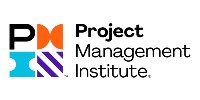Opening The Black Box Of Benefits Management In The Context Of Projects

Benefits management is currently generating interest but remains difficult to implement. Furthermore, when implemented, it does not always fulfill its promises. Our research aimed to understand the nature of the challenges of benefits management and learn more about its actual practice by project actors. Prescriptions detailing what to do abound, yet we know very little about the actual practices people follow when they are engaged in benefits management. These actual activities add social and political dimensions to benefits management, as these have up to now been neglected. These dimensions are important to understand as they help us understand the challenges experienced in benefits management implementation and practice.
The main goal of our study was, hence, to complement the current technical knowledge on benefits management with an in-depth understanding of the social practices that constitute benefits management.
Method Summary

To expose the social and political dimensions of benefits management, we opted for detailed qualitative case studies. We approached four organizations in Canada, selected for their diversity in terms of both industrial sector and benefits management maturity. We conducted interviews with project actors responsible for benefits management in their organizations. Although the cases were from different sectors (finance, public transportation, healthcare and public administration) and presented varying degrees of maturity in benefits management, the experiences of the people we interviewed revealed
similar challenges, deriving from the social and political dimensions of benefits management.
Key Findings
Our case studies document that benefits management is neither solely a technical task nor is it a linear process. More specifically, our analysis surfaced two major findings:
- Defining what the benefits are or should be for any project is far from being as simple
as it seems; it is a complex task because the concept of a benefit itself can be
understood in a variety of ways, even inside the same organization. Furthermore, if
identifying the benefits expected from a project does include rational analysis and
calculations, it also involves different values, interpretations, and perceptions
stemming from the variety of actors involved, which can influence the entire benefits
management process. - Benefits management changes over the course of projects in these ways:
1. Early in projects, benefits management often begins by identifying both qualitative and quantitative benefits; yet, non-measurable benefits tend to be quickly dropped, which might lead to missing the crucial benefits expected from projects.
2. Then, in the process of gaining approval for the project, benefits management can transform into a sales rhetoric: benefits become arguments justifying the project and can be overestimated. This is risky, however; as such, benefits may go beyond the organization’s capacity to realize them.
3. Finally, at the end of a project, our analysis reveals that benefits carefully identified in the early stages of a project tend to be neglected during the project’s evaluation. These benefits could have been used to ensure that projects generate what was expected of them.
Practical Implications
Our study has these practical implications for project management practitioners:
- Recognizing the diversity of meanings associated with what can be a benefit and working with it, rather than trying to fight it. This multiplicity of perspectives is part of the social and political dynamics of projects. It is not per se an issue; rather, it can offer an opportunity to make explicit the variety of interpretations and values within a project, hence helping to clarify what is expected of a project.
- Being aware of the risks of the sales rhetoric, which can lead to overselling the expected benefits of a project.
- Keeping the identified benefits visible throughout the project, including in its final evaluation; this is part of benefits management, yet seems to be put aside in practice. This neglect may derive from a shift from business to project management indicators during project evaluation. It may also stem from changes in personnel—if those in charge of delivering benefits are not present at the end of the project, it can be more difficult to keep the identified benefits visible.
Overall Takeaway
Practitioners are invited to pay attention to the social and political dimensions of benefits management, which are irremediably bound to its rational and technical aspects. The variety of ways in which benefits may be understood, defined and used during the course of project realization acts as evidence of their presence. Benefits should help ensure that projects deliver what is expected of them. Benefits management may have technical dimensions, but it is always practiced in context with multiple actors. Whether acknowledged or not, social and political dimensions will appear and influence the overall process of benefits management. These dimensions cannot be tackled with more formal structure and are integral to this activity. Recognizing the social and political dimensions of benefits management can attune practitioners to the complexity of this crucial activity and help them to better seize its value for project management.
For further information on this and similar projects, please contact Monique Aubry at aubry.monique@uqam.ca, Sanaa El Boukri at el_boukri.sanaa@uqam.ca, Viviane Sergi at sergi.vivane@uqam.ca
For the full article, go to: Opening the Black Box of Benefits Management in the Context of Projects – Monique Aubry, Sanaa El Boukri, Viviane Sergi, 2021 (sagepub.com)






























































































